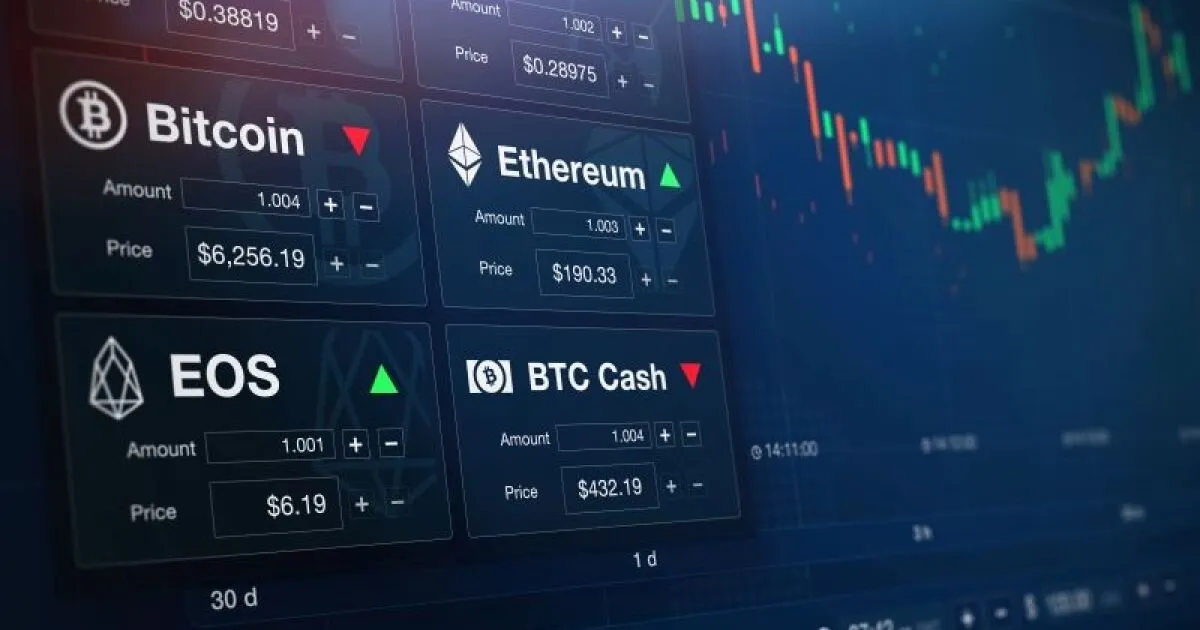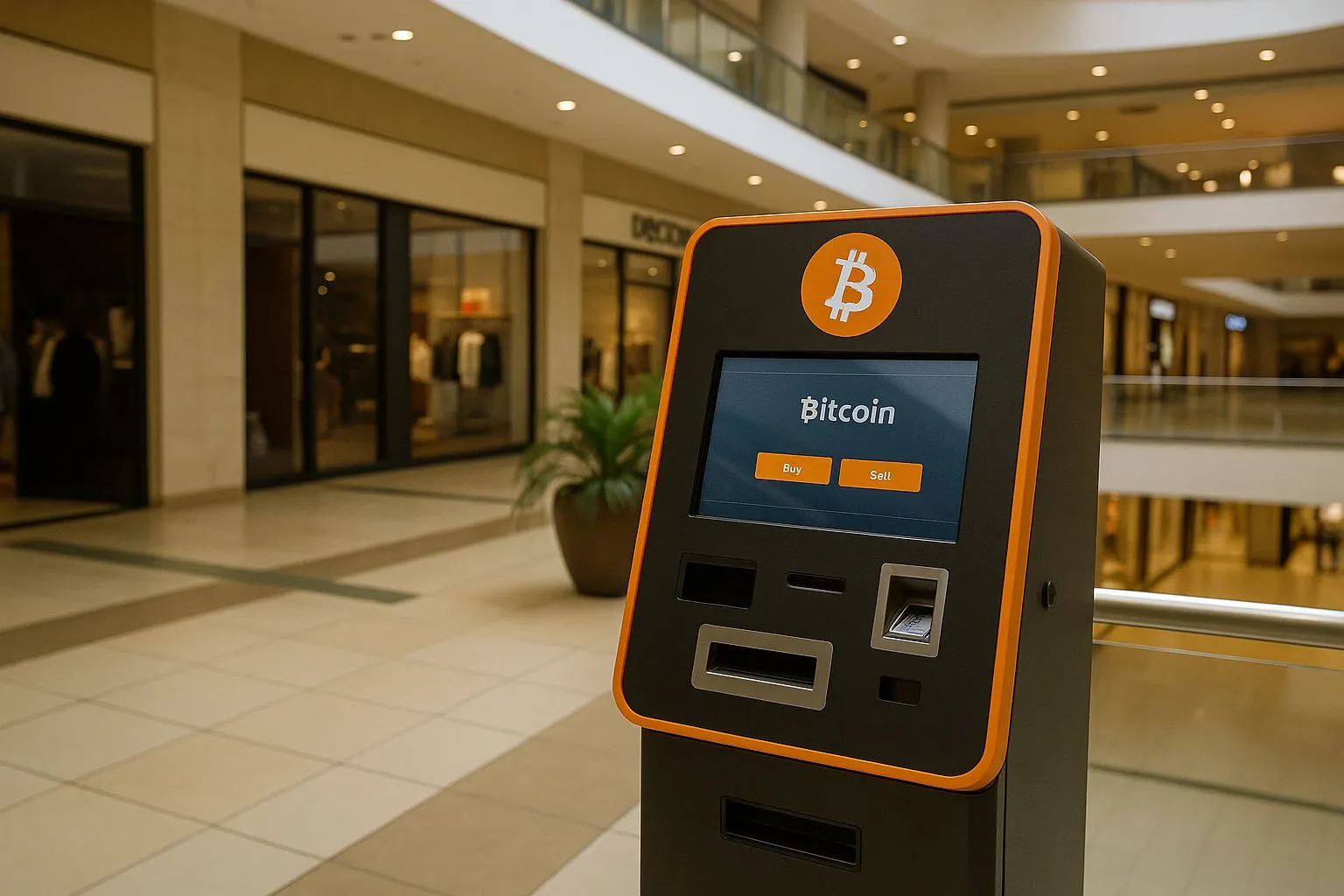The cryptocurrency exchange-traded fund (ETF) market experienced one of its most volatile trading sessions on Thursday, November 14, 2025, as established Bitcoin and Ethereum funds endured severe redemptions totaling more than $1.1 billion, while Canary Capital’s newly launched XRP ETF celebrated a record-breaking debut that captured investor imagination despite broader market turmoil.
This stark divergence in ETF performance highlighted shifting investor sentiment across different segments of the cryptocurrency market, as traditional digital asset stalwarts faced unprecedented outflows while a new altcoin offering drew massive first-day interest that exceeded even the most optimistic analyst projections.
Historic Bitcoin ETF Outflows Signal Shifting Market Dynamics
The 11 spot Bitcoin ETFs collectively shed nearly $867 million in assets on Thursday, representing the second-highest single-day outflow total in the 22-month history of these investment vehicles, according to data from UK asset manager Farside Investors. This exodus of capital from Bitcoin ETFs came as the cryptocurrency itself faced significant downward pressure, with BTC dropping below $98,500 for the first time in more than six months—a decline of approximately 20% from its record high established in early October.
The benchmark cryptocurrency continued its decline into Friday morning, breaching the psychologically important $97,000 level and triggering concerns among investors about the sustainability of Bitcoin’s recent bull run. According to CoinGecko, the market data aggregator that tracks real-time cryptocurrency prices across hundreds of exchanges worldwide, the selloff represented one of the most sustained periods of negative price action since the introduction of spot Bitcoin ETFs in January 2024.
Leading the outflows was BlackRock’s iShares Bitcoin Trust (IBIT), the largest spot Bitcoin fund with more than $80 billion in assets under management. The flagship product shed more than a quarter billion dollars in a single trading session, marking a dramatic reversal for what has been the most successful ETF launch in history. Since late October 2025, BlackRock’s IBIT has experienced massive outflows, with the fund recording a nine-month high in weekly withdrawals that reached $570 million.
Ki Young Ju, founder and CEO of CryptoQuant, highlighted that BlackRock’s outflow represented the largest weekly withdrawal from IBIT since around February 2025, signaling a substantial shift in institutional investor behavior despite the fund’s strong performance track record throughout most of the year.
The Fidelity Wise Origin Bitcoin Fund (FBTC), the second-largest Bitcoin ETF by assets under management, dropped more than $119 million in investments during the same period. Interest in these flagship Bitcoin funds has notably deteriorated in recent weeks, with IBIT hemorrhaging more than $1 billion over the last 13 trading days and FBTC losing more than $681 million during the same period, according to industry tracking data.
Ethereum ETFs Face Parallel Pressure
The nine Ethereum spot ETFs fared no better, bleeding an additional $260 million on what marked the third consecutive day of outflows for these newer investment products. This sustained redemption pattern suggested that institutional investors were broadly retreating from cryptocurrency exposure across multiple assets rather than simply rotating between different digital currencies.
BlackRock’s iShares Ethereum Trust (ETHA) led the Ethereum fund outflows with a single-day net outflow of $137 million, representing over half of the total Ethereum ETF redemptions for the day. Despite this significant withdrawal, ETHA’s historical total net inflow remained substantial at approximately $13.6 billion, demonstrating the fund’s strong cumulative performance since its launch earlier in 2025.
Grayscale’s Ethereum ETF (ETHE) also experienced outflows, though on a somewhat smaller scale compared to BlackRock’s product. The sustained outflows across Ethereum ETFs over a 25-day period had totaled $1.77 billion by mid-November, signaling consistent institutional caution around the second-largest cryptocurrency.
Ethereum itself mirrored Bitcoin’s price weakness, hitting four-month lows as the cryptocurrency traded below critical technical support levels. Solana, another major altcoin, reached five-month lows during the same trading session, underscoring the breadth of the selloff across the digital asset ecosystem.
Understanding the Broader Market Context
The massive ETF outflows occurred against a backdrop of deteriorating conditions for risk-on assets more broadly. Tech stocks also faced selling pressure as investors demonstrated increased caution amid what analysts described as a shaky U.S. economic and political environment. Rising real yields, geopolitical tensions, and persistently high interest rates created a challenging environment for assets perceived as speculative or volatile, including cryptocurrencies.
The correlation between cryptocurrency and traditional risk assets became particularly evident during this period, with digital currencies moving in tandem with technology stocks and other growth-oriented investments. This behavior contrasted sharply with Bitcoin’s original value proposition as an uncorrelated asset that might serve as a hedge against traditional financial market volatility.
Market analysts noted that the 43-day U.S. government shutdown, which ended on November 12, 2025, contributed to ongoing fiscal uncertainty and changing expectations around Federal Reserve policy. These macroeconomic headwinds weighed heavily on investor sentiment, prompting many to reduce exposure to assets considered higher on the risk spectrum.
Several factors appeared to drive the simultaneous Bitcoin and Ethereum ETF outflows. First, profit-taking by early investors who had accumulated significant gains during the post-ETF-launch rally seemed to accelerate. Second, concerns about cryptocurrency regulation under potentially shifting political leadership created uncertainty. Third, technical factors including Bitcoin’s break below key support levels triggered algorithmic selling and stop-loss orders that amplified downward momentum.
James Butterfill, head of research at CoinShares, linked the recent outflows to what he termed the “October 10 liquidity event” and increased macroeconomic concerns, particularly around interest rate policy in the United States. CoinShares’ Digital Asset Fund Flow Weekly report revealed that global cryptocurrency ETPs saw $2 billion in net outflows in the week ending November 14, marking the biggest weekly outflow since February 2025.
XRP ETF Makes Historic Market Entrance
While Bitcoin and Ethereum ETFs struggled with massive redemptions, Canary Capital’s spot XRP ETF (XRPC) defied the broader market malaise by opening with $58 million in first-day trading volume, establishing the strongest debut of any exchange-traded fund launched in 2025. The inaugural trading session for XRPC narrowly bested the performance of Bitwise’s Solana Staking ETF (BSOL), which opened with $57 million when it launched two weeks earlier.
Bloomberg Senior ETF Analyst Eric Balchunas, who had initially projected around $17 million for XRPC’s first-day volume, expressed surprise at the fund’s performance. The XRP ETF cleared his estimate within half an hour of trading, with Balchunas sharing that XRPC had already reached $26 million in trading volume within its first 30 minutes on platforms like Robinhood.
“Congrats to $XRPC for $58m in Day One volume, the most of any ETF launched this year (out of 900), BARELY edging out $BSOL’s $57m,” Balchunas posted on social media platform X. “The two of them are in league of own tho as 3rd place is over $20m away.”
According to multiple reports, investors poured approximately $245 million into the fund at launch, making it the biggest ETF debut of 2025 overall when measuring total inflows rather than just trading volume. This wave of demand briefly pushed XRP’s price from around $2.34 up to nearly $2.50, reflecting an initial burst of optimism surrounding the new investment vehicle.
Bloomberg analyst James Seyffart praised the timing of the launch, noting: “Doing it on a down day like today is pretty impressive,” after XRPC topped the charts despite a broader stock market selloff on Thursday. Fellow Bloomberg ETF expert Eric Balchunas added that XRPC and BSOL “are in a league of their own,” highlighting robust investor appetite for mainstream altcoin products beyond Bitcoin and Ethereum.
The Regulatory Path to XRP ETF Approval
The launch of Canary Capital’s XRP ETF marked a significant milestone for the cryptocurrency industry, representing the first U.S.-listed spot ETF offering direct exposure to XRP, the native asset of the XRP Ledger. The product, trading under the ticker XRPC on Nasdaq, became possible after a series of crucial regulatory developments.
Canary Capital utilized the auto-effective registration process under Section 8(a) of the Securities Act of 1933. By filing Form 8-A with the Securities and Exchange Commission and removing a delaying amendment, the firm triggered a 20-day window for automatic approval unless the SEC objected. This streamlined path has become the standard procedure for cryptocurrency ETF issuers seeking swift market access.
The listing was certified by Nasdaq on November 12, 2025, with Nasdaq Regulation submitting formal certification to the SEC. The letter, signed by Eun Ah Choi, cleared the final regulatory hurdle for trading to begin. Canary’s timing aligned with a period of reduced SEC activity and a more crypto-friendly regulatory approach under new leadership.
Steven McClurg, founder and CEO of Canary Capital, explained the regulatory context: “XRP is one of the most established and widely used digital assets in the world, accessibility to XRP through an ETF will enable the next wave of adoption and growth in a critical blockchain system.” The launch became feasible after XRP’s prolonged legal battle with the SEC concluded in August 2025, when courts drew important distinctions between institutional XRP sales and secondary-market transactions.
XRP’s Unique Value Proposition
The XRPC ETF’s strong debut reflected not just general cryptocurrency enthusiasm but also specific interest in XRP’s utility-focused value proposition. Unlike Bitcoin, which primarily serves as digital money and a store of value, or Ethereum, which powers decentralized applications, XRP was designed primarily for moving money quickly across borders through the XRP Ledger payment network.
The XRP Ledger can process transactions in three to five seconds with minimal fees, making it significantly faster than traditional banking systems for cross-border payments. The network handles up to 1,500 transactions per second using a consensus-based validation system rather than energy-intensive mining, positioning it as an environmentally friendly alternative to proof-of-work cryptocurrencies.
McClurg emphasized this practical application: “We believe XRP will play a key role in the evolution of our global financial system. It’s a bridge between traditional finance and the blockchain economy, built for scale, and real enterprise utility.”
The timing of the XRP ETF launch also benefited from a significant corporate partnership announcement. On the same day XRPC began trading, Ripple—the company most closely associated with XRP development—announced a partnership with Mastercard and Gemini to enable stablecoin payments for credit card transactions. This major corporate win positioned XRP deeper into mainstream financial infrastructure and lent credibility to the cryptocurrency’s real-world utility narrative.
Market Reactions and Price Performance
Despite the strong ETF debut, XRP’s price reaction proved more muted than some analysts had anticipated. After an initial pop to nearly $2.50, XRP encountered profit-taking pressure and settled back around $2.30 in subsequent trading. This relatively restrained price response suggested that much of the anticipation around the ETF launch had already been priced into the market during XRP’s earlier rally.
The cryptocurrency had already surged more than 200% in 2025 prior to the ETF launch, driven by anticipation of regulatory approval and the conclusion of Ripple’s legal challenges with the SEC. Some market observers noted that the ETF debut, while impressive in absolute terms, may have represented a “sell the news” event for traders who had accumulated positions in advance of the launch.
Technical analysts identified resistance levels between $2.69 and $2.84, suggesting that XRP would need to break above this zone to trigger a stronger upward move. Some forecasters predicted a potential path toward $5 by late 2025 if ETF-driven inflows and liquidity held steady, though such projections remained highly speculative given cryptocurrency market volatility.
JPMorgan analysts estimated that a spot XRP product could attract up to $8 billion in assets, providing a framework for understanding the potential scale of institutional interest. However, analysts stressed that lasting gains would require genuine adoption of XRP in financial systems rather than just investor enthusiasm for the ETF wrapper.
Comparing BSOL and XRPC: The Altcoin ETF Race
The success of both XRPC and the earlier-launched Bitwise Solana Staking ETF (BSOL) demonstrated robust appetite for cryptocurrency ETFs beyond Bitcoin and Ethereum. BSOL had already generated more than $550 million in net inflows since its launch, though on Thursday it totaled just $1.5 million in flows as investors pivoted attention to the newer XRP offering.
The performance of these altcoin ETFs stood in stark contrast to the struggles of their more established counterparts. While Bitcoin and Ethereum ETFs hemorrhaged assets, the newer products focused on utility-driven cryptocurrencies with specific use cases attracted fresh capital. This divergence suggested that institutional investors were becoming more discriminating in their cryptocurrency allocations, favoring assets with clear value propositions beyond simple speculation.
Industry observers noted that at least a half-dozen other XRP ETFs from major issuers including Franklin Templeton, 21Shares, Bitwise, and others were reportedly lined up for launch in the coming weeks. This competitive landscape indicated that asset managers viewed XRP as a prime candidate for mainstream institutional adoption, despite some of Canary Capital’s other altcoin ETFs—such as its Hedera (HBAR) and Litecoin funds—launching quietly in October with minimal initial inflows.
Looking Ahead: Implications for Crypto Markets
The dramatic divergence between established cryptocurrency ETFs and newer altcoin offerings raised important questions about the future trajectory of digital asset investment vehicles. Several key themes emerged from Thursday’s market action.
First, the massive outflows from Bitcoin and Ethereum ETFs suggested that the initial wave of institutional enthusiasm following ETF approvals may have run its course, at least temporarily. After the euphoric rally that followed the January 2024 launch of spot Bitcoin ETFs, markets appeared to be entering a consolidation phase characterized by profit-taking and reduced risk appetite.
Second, the success of utility-focused altcoin ETFs like XRPC and BSOL indicated that investors were seeking exposure to cryptocurrencies with specific use cases rather than treating all digital assets as interchangeable. This selectivity could drive greater differentiation within the cryptocurrency market, rewarding projects with genuine technological advantages or clear paths to adoption.
Third, the correlation between cryptocurrency and traditional risk assets remained strong, suggesting that digital currencies had not yet achieved their potential as portfolio diversifiers. The fact that Bitcoin and Ethereum ETFs experienced heavy outflows on the same day as tech stock weakness indicated that institutional investors continued to view cryptocurrencies through a risk-on/risk-off lens rather than as fundamentally distinct asset classes.
Fourth, the regulatory environment for cryptocurrency ETFs appeared to be stabilizing, with the streamlined approval process used for XRPC potentially serving as a template for future product launches. A more predictable regulatory framework could accelerate product innovation and expand investor access to a broader range of digital assets.
Conclusion: A Market in Transition
Thursday’s trading session captured cryptocurrency markets in a state of transition. The simultaneous $1.1 billion outflow from Bitcoin and Ethereum ETFs and the record-breaking $58 million first-day volume for the XRP ETF illustrated both the challenges facing established digital assets and the ongoing appetite for cryptocurrency exposure when packaged in innovative ways.
For Bitcoin and Ethereum, the substantial outflows represented a significant test of institutional commitment following months of generally positive flows. Whether these redemptions signaled a temporary pause or a more sustained retreat from cryptocurrency exposure remained unclear, with much depending on broader macroeconomic conditions and regulatory developments.
For XRP and other utility-focused cryptocurrencies, the strong ETF debut validated the thesis that investors would embrace digital assets with clear use cases beyond speculation. However, translating initial ETF enthusiasm into sustained price appreciation and genuine ecosystem growth would require demonstrating that these use cases could achieve meaningful real-world adoption.
As the cryptocurrency ETF market matured, investors increasingly demanded differentiation and genuine utility from the digital assets in which they invested. The days of all cryptocurrencies rising and falling in unison appeared to be giving way to a more nuanced market where fundamentals, use cases, and execution mattered more than simply riding broad industry momentum. Thursday’s divergent ETF performance provided a compelling snapshot of this evolution in action.
Article, Financial and News Disclaimer
The Value of a Financial Advisor
While this article offers valuable insights, it is essential to recognize that personal finance can be highly complex and unique to each individual. A financial advisor provides professional expertise and personalized guidance to help you make well-informed decisions tailored to your specific circumstances and goals.
Beyond offering knowledge, a financial advisor serves as a trusted partner to help you stay disciplined, avoid common pitfalls, and remain focused on your long-term objectives. Their perspective and experience can complement your own efforts, enhancing your financial well-being and ensuring a more confident approach to managing your finances.
Disclaimer: This article is for informational purposes only and does not constitute financial advice. Readers are encouraged to consult a licensed financial advisor to obtain guidance specific to their financial situation.
Article and News Disclaimer
The information provided on www.serrarigroup.com is for general informational purposes only. While we strive to keep the information up to date and accurate, we make no representations or warranties of any kind, express or implied, about the completeness, accuracy, reliability, suitability, or availability with respect to the website or the information, products, services, or related graphics contained on the website for any purpose. Any reliance you place on such information is therefore strictly at your own risk.
www.serrarigroup.com is not responsible for any errors or omissions, or for the results obtained from the use of this information. All information on the website is provided on an as-is basis, with no guarantee of completeness, accuracy, timeliness, or of the results obtained from the use of this information, and without warranty of any kind, express or implied, including but not limited to warranties of performance, merchantability, and fitness for a particular purpose.
In no event will www.serrarigroup.com be liable to you or anyone else for any decision made or action taken in reliance on the information provided on the website or for any consequential, special, or similar damages, even if advised of the possibility of such damages.
The articles, news, and information presented on www.serrarigroup.com reflect the opinions of the respective authors and contributors and do not necessarily represent the views of the website or its management. Any views or opinions expressed are solely those of the individual authors and do not represent the website's views or opinions as a whole.
The content on www.serrarigroup.com may include links to external websites, which are provided for convenience and informational purposes only. We have no control over the nature, content, and availability of those sites. The inclusion of any links does not necessarily imply a recommendation or endorsement of the views expressed within them.
Every effort is made to keep the website up and running smoothly. However, www.serrarigroup.com takes no responsibility for, and will not be liable for, the website being temporarily unavailable due to technical issues beyond our control.
Please note that laws, regulations, and information can change rapidly, and we advise you to conduct further research and seek professional advice when necessary.
By using www.serrarigroup.com, you agree to this disclaimer and its terms. If you do not agree with this disclaimer, please do not use the website.
www.serrarigroup.com, reserves the right to update, modify, or remove any part of this disclaimer without prior notice. It is your responsibility to review this disclaimer periodically for changes.
Serrari Group 2025












